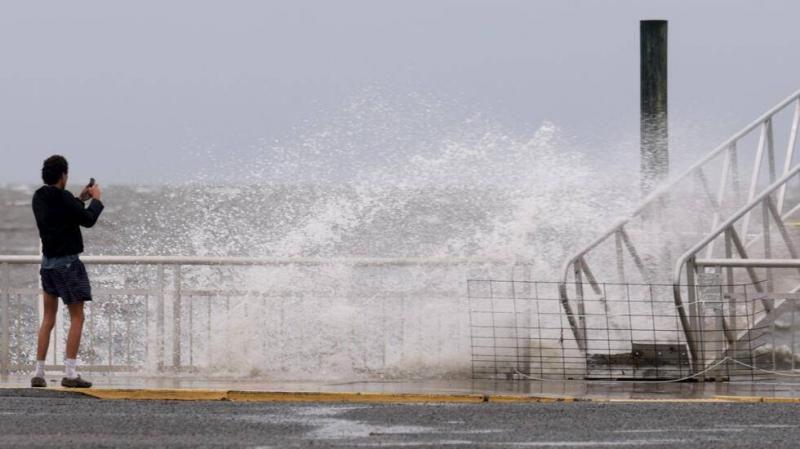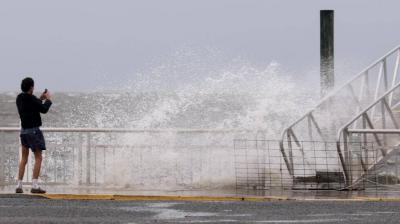The tropical storm Debbie, which entered the U.S. mainland on Monday morning as a hurricane before its intensity weakened, has resulted in at least four fatalities and now threatens catastrophic flooding in the southern United States. Local authorities reported that a 13-year-old boy died when a tree fell on his family’s mobile home in Fanning Springs, northwest Florida. In Dixie County in the same state, police announced that two people were killed in a vehicle after the driver "lost control due to adverse weather and wet roads." The fourth victim was a truck driver who died near Tampa after falling into a ditch.
Debbie, which transitioned into a tropical storm upon making landfall, is expected to move into northern Florida on Monday and then head toward southern Georgia before reaching the coast of that state and South Carolina by Tuesday evening, according to the U.S. Hurricane Center. After achieving wind speeds of 120 km/h, the winds associated with the storm slowed to 85 km/h by the evening, and they are expected to continue to decline, according to the National Hurricane Center.
The center warned of potential water levels rising by approximately two meters in some coastal areas. Michael Brennan, the director of the National Hurricane Center, stated, “The impacts of Hurricane Debbie have just begun and will be felt throughout the week in parts of the southeastern coast.” The power outage affected hundreds of thousands of people as the southeastern U.S. prepares for potentially historic levels of rain and severe flooding.
Debbie made landfall in the Big Bend region of Florida as a Category One hurricane, which is the lowest on a five-category scale, thanks to unusually warm temperatures in the Gulf of Mexico. The National Hurricane Center reported that the maximum sustained wind speed reached 130 kilometers per hour. According to PowerOutage, which tracks power supply, more than 250,000 consumers have experienced outages so far.
The National Hurricane Center has warned of life-threatening storm surges along the Florida Gulf Coast with flooding ranging from 6 to 10 feet (1.8 to 3 meters) above ground level in some areas. The center indicated that the storm could cause catastrophic flooding with "historic heavy rainfall" as it moves northeast through Georgia and South Carolina in the coming days.
Florida Governor Ron DeSantis stated in an emergency briefing about the hurricane on Sunday, "We are facing the possibility of very significant flooding, especially in north central Florida." DeSantis and Jamie Rhome, Deputy Director of the National Hurricane Center, urged residents of Florida to prepare swiftly for the storm. Mandatory evacuation orders have been issued for parts of Citrus County, with voluntary evacuation orders for eight other counties, according to local media.
The hurricane is expected to bring rainfall amounts between 6 to 12 inches in parts of Florida and up to 20 to 30 inches in coastal areas of Georgia and South Carolina before the end of the week, according to the National Hurricane Center. Governors of Georgia and South Carolina declared states of emergency ahead of the hurricane's arrival. Authorities anticipate heavy rain over several days, with levels that could be record-breaking, and a risk of severe flash flooding.
President Joe Biden approved an emergency declaration for Florida on Sunday, allowing for the accelerated delivery of federal assistance. DeSantis also activated the state's National Guard, placing three thousand of its members on standby to assist in storm response.




